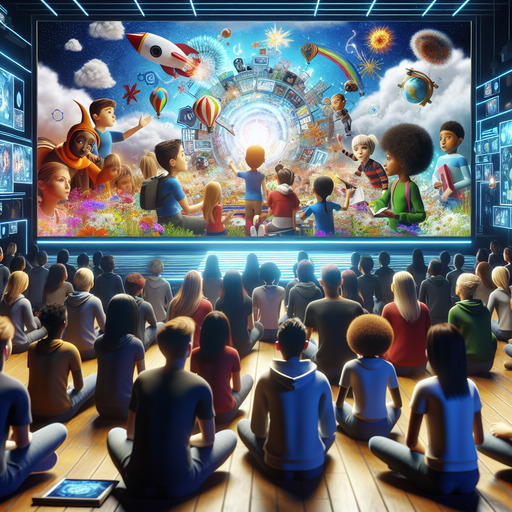
-
Table of Contents
Unlock the potential of your educational content and captivate today’s learners with engaging video lessons! Start creating impactful educational videos now!
Introduction
In an era where digital technology permeates every aspect of life, creating educational video content that resonates with today’s learners has become both an art and a science. The modern learner is inundated with information from countless sources, making it imperative for educators to craft content that not only educates but also engages and inspires. This involves understanding the unique characteristics and preferences of contemporary students, who are often digital natives with a penchant for interactive and visually stimulating material. Effective educational videos must therefore blend pedagogical principles with creative storytelling, leveraging multimedia elements to enhance comprehension and retention. By focusing on clarity, relevance, and interactivity, educators can create compelling video content that meets the diverse needs of today’s learners, fostering a more dynamic and effective learning experience.
How to Create Educational Video Content That Resonates with Today’s Learners
Creating educational video content that resonates with today’s learners requires a nuanced understanding of both pedagogical principles and the evolving preferences of modern audiences. To begin with, it is essential to recognize that today’s learners are digital natives, accustomed to consuming information through dynamic and interactive mediums. Therefore, the first step in crafting compelling educational videos is to ensure that the content is engaging and visually appealing. This can be achieved by incorporating high-quality graphics, animations, and real-life footage that not only capture attention but also aid in the comprehension of complex concepts.
Transitioning from visual appeal to content structure, it is crucial to design videos that are concise and focused. Modern learners often have shorter attention spans, making it imperative to break down information into digestible segments. This can be accomplished by creating a series of short videos, each addressing a specific topic or question. By doing so, educators can maintain the viewer’s interest and facilitate better retention of information. Additionally, incorporating interactive elements such as quizzes, polls, and discussion prompts can further enhance engagement and provide opportunities for active learning.
Another important consideration is the tone and delivery of the content. Today’s learners appreciate authenticity and relatability, so it is beneficial for educators to adopt a conversational tone and present information in a manner that is both approachable and authoritative. This can be achieved by using real-world examples, storytelling techniques, and personal anecdotes that make the content more relatable and memorable. Furthermore, the use of clear and concise language, free from jargon and overly technical terms, ensures that the material is accessible to a broader audience.
In addition to content delivery, the integration of multimedia elements can significantly enhance the learning experience. For instance, incorporating background music, sound effects, and voiceovers can add an extra layer of engagement and help to emphasize key points. However, it is important to strike a balance and avoid overloading the viewer with too many sensory inputs, which can be distracting and counterproductive. The goal is to create a harmonious blend of audio and visual elements that complement the educational content and reinforce the learning objectives.
Moreover, it is essential to consider the diverse learning styles and preferences of the audience. Some learners may prefer visual aids, while others might benefit more from auditory or kinesthetic elements. To cater to this diversity, educators can employ a variety of instructional strategies, such as demonstrations, simulations, and hands-on activities, within the video content. Providing supplementary materials, such as downloadable worksheets, infographics, and reading lists, can also support different learning preferences and enhance the overall educational experience.
Finally, the importance of feedback and continuous improvement cannot be overstated. Educators should actively seek feedback from their audience to understand what works well and what areas need improvement. This can be done through surveys, comments, and direct interactions with learners. By analyzing this feedback and making necessary adjustments, educators can refine their video content to better meet the needs and expectations of their audience.
In conclusion, creating educational video content that resonates with today’s learners involves a careful balance of visual appeal, concise and focused content, relatable delivery, multimedia integration, and consideration of diverse learning styles. By adopting these strategies and continuously seeking feedback, educators can create impactful and engaging video content that effectively supports the learning journey of modern audiences.
Q&A
1. **Question:** What are some key strategies for creating educational video content that resonates with today’s learners?
**Answer:** Key strategies include:
– **Understanding the Audience:** Tailor content to the interests, needs, and learning styles of the target audience.
– **Engaging Visuals and Graphics:** Use high-quality visuals, animations, and infographics to maintain interest.
– **Interactive Elements:** Incorporate quizzes, polls, and interactive activities to engage learners actively.
– **Concise and Clear Messaging:** Keep videos short and focused on key points to avoid overwhelming viewers.
– **Storytelling:** Use narratives and real-life examples to make content relatable and memorable.
– **High-Quality Production:** Ensure good audio and video quality to maintain professionalism and viewer engagement.
– **Accessibility:** Provide subtitles, transcripts, and other accessibility features to cater to all learners.
– **Feedback and Iteration:** Collect feedback from viewers and continuously improve content based on their input.